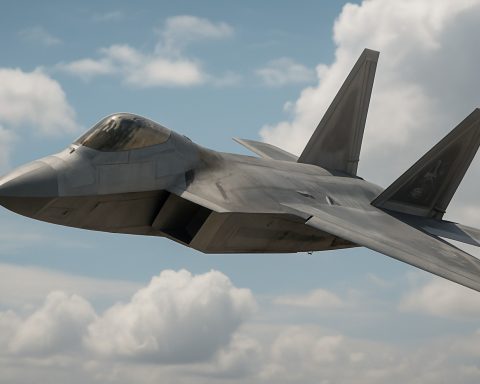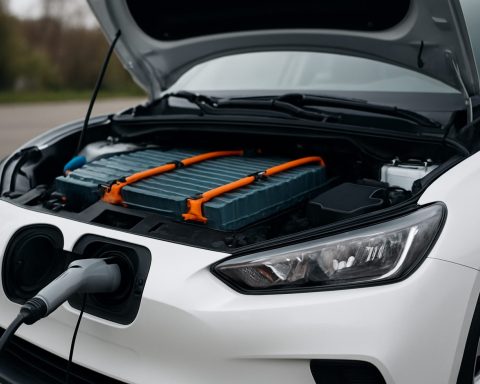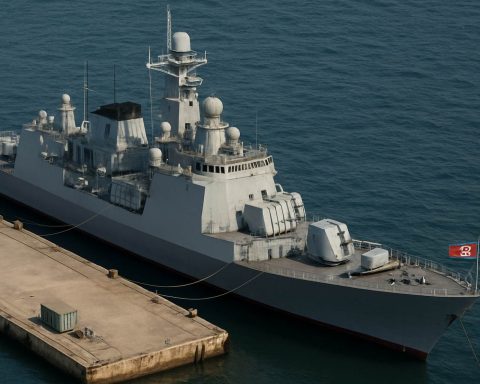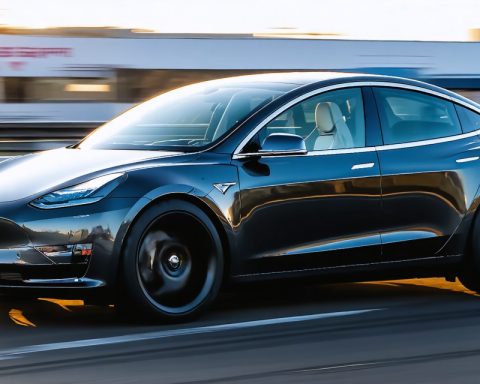- MicroVision, Inc., based in Redmond, WA, is a key player in Lidar technology, driving advances in autonomous systems.
- Lidar offers precision and safety by creating 3D maps, making it crucial for autonomous vehicles, drones, and logistics.
- The global Lidar market is poised for significant growth between 2023 and 2029, largely due to its impact on AI-powered applications.
- MicroVision’s brands, such as MAVIN™, MOVIA™, and MOSAIK™, highlight its innovative edge despite modest revenues.
- Partnerships with major industrial players like ZF show MicroVision’s commitment to a future anchored in Lidar technology.
- Lidar is emerging as a foundational technology for automation, with MicroVision positioned as a leading catalyst in this evolution.
Amid a tech landscape buzzing with futuristic possibilities, the unassuming town of Redmond, Washington, is home to a trailblazer in Lidar technology—MicroVision, Inc. Nestled at the epicenter of the autonomous revolution, MicroVision is engineering a quiet transformation, offering innovative Lidar solutions that promise to make roads safer, drones smarter, and logistics more efficient.
With roads claiming 1.35 million lives annually due to human error, the push for self-driving cars surges forward. Lidar technology, emitting precision laser pulses, rapidly forms three-dimensional maps, outpacing the human eye. This breakthrough not only promises safer journeys but also holds the potential to reshape industries far beyond automotive. Think autonomous drones, oblivious to weather and fatigue, ensuring swift delivery of e-commerce parcels. Each laser pulse heralds a new era of operations streamlined and human errors minimized.
As Principal Consultant S. N. Jha envisions, the embrace of Lidar’s stunning accuracy is just beginning. Between 2023 and 2029, its market could see a meteoric rise, sparked in part by its transformative impact on AI-enabled systems and autonomous applications—from bustling warehouses to our very streets.
MicroVision, with its portfolio of MAVIN™, MOVIA™, and MOSAIK™ brands, may be a small company, but its ambitions are grand. Despite modest revenues, the company is carving a path toward profitability, scaling production, and aggressively cutting costs. Partnering with industrial giants like ZF, MicroVision is not just looking to the future; it’s building it, sensor by sensor.
While MicroVision navigates financial ebbs and flows, the broader message is clear: Lidar is not just a technology; it is a cornerstone of our automated future. And MicroVision stands poised to be a pivotal player, shaping the way forward one laser beam at a time.
The Future of Lidar: MicroVision Leading the Charge in Autonomous Innovation
Exploring How Lidar Technology is Transforming the World
Lidar technology has emerged as a game-changer in advanced driving assistance systems (ADAS) and autonomous vehicle development. Fiduciaries like MicroVision, Inc., based in Redmond, Washington, are at the forefront of this technological revolution, creating innovative Lidar solutions that promise safer roads, smarter drones, and more efficient logistics operations.
How-To Steps & Life Hacks
To harness the full potential of Lidar technology in various applications, follow these general steps:
1. Understand Lidar Basics: Start by learning about the basic principles of Lidar—light detection and ranging—using laser pulses to create detailed 3D maps of surroundings.
2. Evaluate Applications: Determine which area can benefit most from Lidar. For automotive solutions, focus on safety and precision. In logistic sectors, emphasize efficiency and speed.
3. Integrate With Current Systems: Ensure Lidar sensors are compatible with existing systems. Use APIs and partnerships with firms like MicroVision to facilitate seamless integration.
4. Test and Iterate: Conduct thorough testing in various real-world conditions to ensure reliability and accuracy. This includes adverse weather situations for autonomous vehicles.
Real-World Use Cases
1. Autonomous Vehicles: Lidar systems are crucial for enabling driverless cars to perceive their environments accurately. Companies like Waymo and Tesla are investing heavily in this technology.
2. Drones: In logistics, autonomous drones equipped with Lidar can navigate precisely, delivering packages efficiently regardless of weather conditions.
3. Architecture and Construction: Lidar is used for creating detailed scans of buildings and land, aiding in project planning and precision in construction.
Market Forecasts & Industry Trends
The Lidar market is projected to expand significantly between 2023 and 2029, driven by growth in autonomous vehicles and smart city projects. Markets and Markets forecasts the global Lidar market to grow from USD 1.4 billion in 2021 to USD 3.4 billion by 2026, at a CAGR of 18.5%.
Reviews & Comparisons
MicroVision’s Lidar products, like MAVIN™ and MOVIA™, are seen as cutting-edge in precision and reliability. However, they face competition from players like Velodyne Lidar, Quanergy, and Luminar. Each brand comes with distinct benefits such as cost, range, and data processing capabilities.
Controversies & Limitations
While Lidar offers remarkable precision, it is not without challenges such as high costs and the potential for performance degradation in adverse weather conditions. Additionally, Lidar technology is often critiqued for its high energy consumption compared to other sensors.
Features, Specs & Pricing
MicroVision’s products feature advanced specs such as high-resolution mapping, long-range detection, and robustness against environmental interferences. Pricing may be a barrier for smaller firms but is competitive compared to market giants. Contact MicroVision for specific pricing tailored to enterprise needs.
Security & Sustainability
Incorporating encryption and secure data transmission protocols ensures the safe usage of Lidar data. On the sustainability front, future advancements aim to reduce the ecological footprint by minimizing energy consumption and favoring eco-friendly production materials.
Pros & Cons Overview
Pros:
– Unmatched precision and speed for real-time mapping.
– Vital for safe autonomous navigation.
– Reduces risks in logistics and drone deliveries.
Cons:
– High cost, often limiting accessibility.
– Potentially affected by adverse weather conditions.
– High energy consumption.
Insights & Predictions
As this technology burgeons, expect increased cross-industry collaboration and public-private partnerships to accelerate development. The push towards smart infrastructure and urban planning will further catapult Lidar’s relevance.
Actionable Recommendations
For those interested in venturing into Lidar technology:
– Partnerships: Align with technology firms like MicroVision to leverage expertise.
– Investment: Invest in R&D to optimize Lidar for your specific industry needs.
– Education: Stay abreast of developments via industry conferences and white papers.
For more information on Lidar technology advancements, visit the MicroVision website.



















